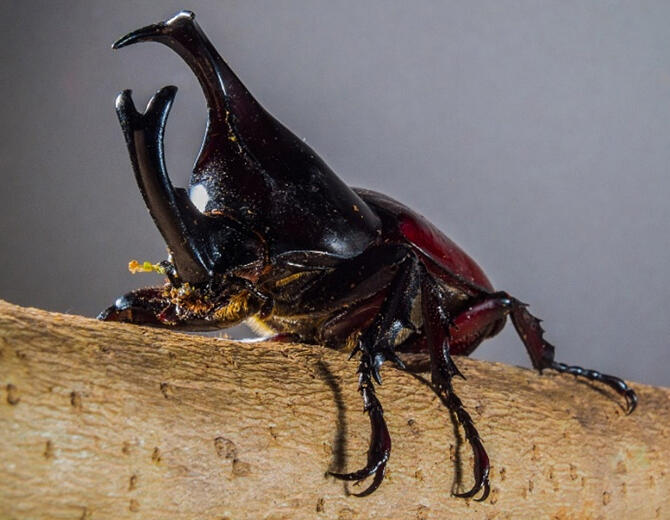An international research team led by Assistant Professor Shinichi Morita, Professor Teruyuki Niimi, and Professor Shuji Shigenobu of the National Institute for Basic Biology, with the assistance of Kanazawa University, the University of Montana, and others, has decoded the nuclear and mitochondrial genomes of the Japanese rhinoceros beetle (Trypoxylus dichotomus septentrionalis) and published the data on a database (http://www.insect.nibb.info/trydi/). The entire genome was 615 million base pairs long (approximately one-fifth of the length of the human genome) and comprised 23,987 protein-coding genes (compared with approximately 22,000 in humans). The findings were published in Scientific Reports.

In a comparison study, the Japanese rhinoceros beetle genome obtained in this study was found to have a high degree of chromosome structure similarity with that of the Chinese rhinoceros beetle genome reported in 2022. This suggests that chromosome structures are evolutionarily conserved between these two populations. By contrast, at the single base level, 1.6% (9,457,239 bases) of polymorphisms and insertions (1,308,368) were detected.
Apart from their morphological differences, the Japanese and Chinese rhinoceros beetles have been reported to exhibit genetic divergence corresponding to their geographical distributions. The polymorphisms identified in this study may explain these morphological differences and provide useful information for studying rhinoceros beetle evolution.
Furthermore, the team analyzed the similarity of genes shared among the Japanese and Chinese rhinoceros beetles, the hornless red flour beetle (Tribolium castaneum), the horned taurus scarab beetle (Onthophagus taurus)—all of which belong to the same beetle order Coleoptera—and the fruit fly (Drosophila melanogaster).
This analysis allowed the team to find genes that each species had uniquely acquired during evolution. For example, there were 543 gene groups shared between the two species of rhinoceros beetles and the taurus scarab beetle only, suggesting that these gene groups may be involved in the formation of "horns," a trait shared between these species. Furthermore, 967 gene groups were unique to the rhinoceros beetles and may possibly elucidate the traits unique to these species.
In rhinoceros beetles, the sex differentiation gene called doublesex (dsx) plays a critical role in horn formation. The dsx gene produces multiple transcripts that differ between males and females. However, the dsx transcripts that contribute to horn formation differ by only 529 base pairs between the sexes. This slight structural difference was one of the factors that determined the presence or absence of a horn.
In addition to the nuclear genome, the mitochondrial genome of the Japanese rhinoceros beetle, consisting of 20,200 base pairs, was also decoded. The mitochondrial genome, which is contained in the mitochondria within the cell, represents genetic information independent from the nuclear genome. The information in the mitochondrial genome is critical in studying biological evolution, including phylogenetic relationships.
The nuclear and mitochondrial genome information revealed in this study will serve as an excellent resource for understanding the evolutionary origin of the rhinoceros beetle horn and its genetic regulation. Rhinoceros beetles have been used as research models not only in evolutionary developmental biology but also in the fields of ecology, behavioral biology, biomimetics, and drug discovery. The genomic information obtained in this study is expected to be used in these broad research fields.
This article has been translated by JST with permission from The Science News Ltd. (https://sci-news.co.jp/). Unauthorized reproduction of the article and photographs is prohibited.




